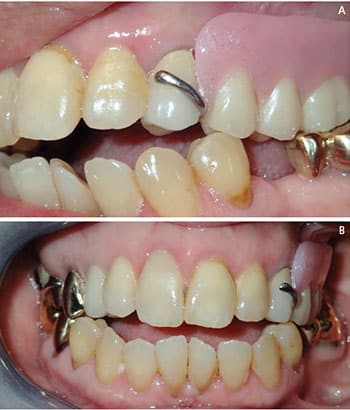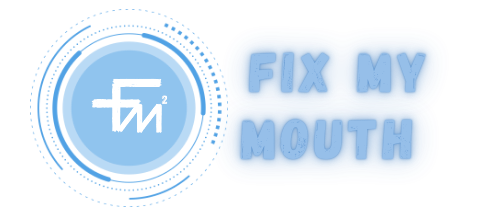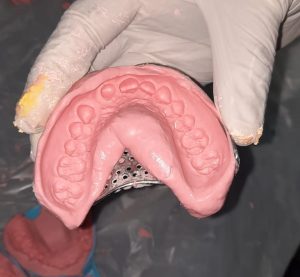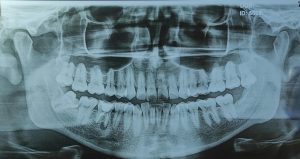Introduction
Removable partial dentures (RPDs) are a common solution for individuals who have lost some of their natural teeth but still have remaining healthy teeth to support a dental appliance. They are cost-effective, relatively easy to fabricate, and help restore aesthetics and function. However, many patients experience difficulties and complications with RPDs. If you are considering getting one, it is important to understand the disadvantages of removable partial denture to make an informed decision.
In this article, we will discuss the disadvantages of removable partial denture, covering comfort issues, durability concerns, maintenance challenges, and potential health risks.
Major Disadvantages of Removable Partial Denture
1. Discomfort and Poor Fit
One of the most common complaints from RPD users is discomfort. Many patients report that their dentures feel unnatural or bulky in the mouth, leading to soreness or irritation.
Causes:
- Poorly designed dentures that do not conform to the oral cavity properly
- Gradual bone loss causing changes in the fit
- Incorrect bite alignment leading to pressure on the gums
Solutions:
- Regular adjustments by a dentist to ensure a proper fit
- Using denture adhesives to improve stability
- Considering alternative treatments such as implant-supported dentures
2. Difficulty in Speaking and Eating
RPDs can interfere with speech clarity and chewing efficiency, especially during the initial adjustment period.
Speech Issues:
- Slurred speech or lisping due to changes in tongue positioning
- Excess saliva production as the mouth adapts to the new appliance
Chewing Challenges:
- Uneven pressure distribution causing difficulty in chewing certain foods
- Food getting trapped under the denture, leading to irritation
Solutions:
- Practicing pronunciation of difficult words
- Gradually adapting by eating soft foods initially
- Having the denture checked and adjusted for better stability
You can watch the video below by a certified dentist help you in chewing.
3. Gum and Soft Tissue Irritation
RPDs can cause irritation and soreness on the gums, leading to inflammation and, in some cases, ulcers.
Causes:
- Excess pressure on the soft tissues
- Allergic reactions to denture materials
- Accumulation of plaque and bacteria
Prevention and Management:
- Regular cleaning of the denture and oral cavity
- Using medicated gels or warm saltwater rinses to relieve soreness
- Consulting a dentist for an improved fit
4. Bone Resorption and Jaw Changes
One significant long-term disadvantage of removable partial denture is bone resorption, where the underlying jawbone shrinks due to lack of stimulation.
Effects of Bone Resorption:
- Loose-fitting dentures over time
- Changes in facial appearance, causing premature aging
- Increased risk of further tooth loss
Prevention:
- Regular dental checkups to monitor bone changes
- Considering dental implants for bone preservation
- Performing facial and jaw exercises to maintain muscle tone
5. Poor Aesthetics and Artificial Appearance
Many RPDs, especially those with metal clasps, can be highly visible, making them less aesthetically pleasing.

Common Complaints:
- Unnatural appearance due to bulky design
- Metal clasps showing when speaking or smiling
Solutions:
- Opting for flexible partial dentures (Valplast) with invisible clasps
- Choosing tooth-colored clasps for better aesthetics
Maintenance and Hygiene Challenges with Removable Partial Dentures
6. Increased Risk of Infections and Bad Breath
Poorly maintained RPDs can become a breeding ground for bacteria and fungi, leading to infections like oral candidiasis (thrush) and persistent bad breath (halitosis).
Causes:
- Failure to clean dentures daily
- Sleeping with dentures, allowing bacterial buildup
- Food particles accumulating beneath the denture
Prevention:
- Cleaning dentures daily using a soft brush and mild soap
- Removing dentures before bed to allow oral tissues to rest
- Using an antibacterial mouthwash
7. Durability and Structural Weakness
RPDs are not as durable as fixed dental solutions and are prone to breakage or warping over time.
Common Issues:
- Acrylic dentures may crack or fracture if dropped
- Metal dentures can bend with repeated use
- Clasps may break or lose their grip
Solutions:
- Handling dentures with care to avoid dropping them
- Storing dentures in water or a denture-soaking solution when not in use
- Seeking professional repair if structural damage occurs
Health Risks of Removable Partial Dentures
8. Increased Risk of Cavities and Gum Disease
RPD wearers are at a higher risk of cavities and periodontal disease, especially if they do not maintain proper oral hygiene.
Causes:
- Food debris accumulating under the denture
- Plaque buildup around remaining natural teeth
- Inconsistent cleaning routine
Preventive Measures:
- Brushing and flossing natural teeth daily
- Using a fluoride mouthwash to strengthen enamel
- Regular professional dental cleanings
9. Metal Allergies and Material Sensitivities
Some patients may experience allergic reactions to the materials used in RPDs, especially cobalt-chromium or nickel-based alloys.
Symptoms of Metal Allergy:
- Redness and irritation in the mouth
- Burning sensation on the tongue
- Swelling of the gums
Alternatives for Sensitive Patients:
- Opting for acrylic or flexible dentures instead of metal-based ones
- Using hypoallergenic materials recommended by a dentist
10. Frequent Adjustments and Repairs Needed
RPDs often require frequent adjustments as the mouth and jaw change over time, leading to additional dental visits and costs.
Common Issues:
- The denture becoming loose due to gum and bone changes
- Clasps losing their grip, requiring tightening or replacement
- Accidental breakage requiring professional repairs
Solutions:
- Scheduling regular dental visits for necessary adjustments
- Handling dentures with care to avoid breakage
- Considering more permanent solutions like dental implants
Is There a Better Alternative to Removable Partial Dentures?
Given the disadvantages of removable partial denture, many patients look for alternative solutions.
Fixed Dental Bridges
- More stable and comfortable than RPDs
- Require adjacent natural teeth for support
- More expensive but longer-lasting
Dental Implants
- Provide permanent tooth replacement
- Prevent bone resorption
- More expensive upfront but cost-effective in the long run
Flexible Partial Dentures
- More comfortable and aesthetically pleasing
- Lack metal clasps, reducing visibility
- Can still lead to hygiene challenges
Conclusion
While removable partial dentures remain a popular option for replacing missing teeth, they come with numerous disadvantages ranging from discomfort and difficulty speaking to bone loss and increased risk of infections. Understanding the disadvantages of removable partial denture can help you prepare for potential challenges and take the necessary steps to minimize them.
If you are considering RPDs, consult with your dentist to explore alternative options like dental implants or fixed bridges for a better long-term solution. Proper maintenance, regular checkups, and good oral hygiene can also enhance your experience with removable partial dentures and improve overall oral health.


